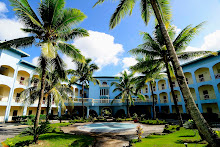
Yapese myths claim that an ancient navigator sailed his canoe 250 miles to the neigboring island of Palau and discovered a sparkling rock, which today's geologists call "crystalline calcite." This material forms the colorful, glistering walls of limestone caves that honeycomb Palau's Rock Islands.
According to the legends, the navigator instructed his sailing crew to carve pieces of rock in the shape of a full moon. A hole was cut in the center of the stone disks so that they could be carried on wooden poles. Radioactive carbon dating indicates the Yapese may have been producing stone money as fas back as 1,500 to 2,000 years ago.







